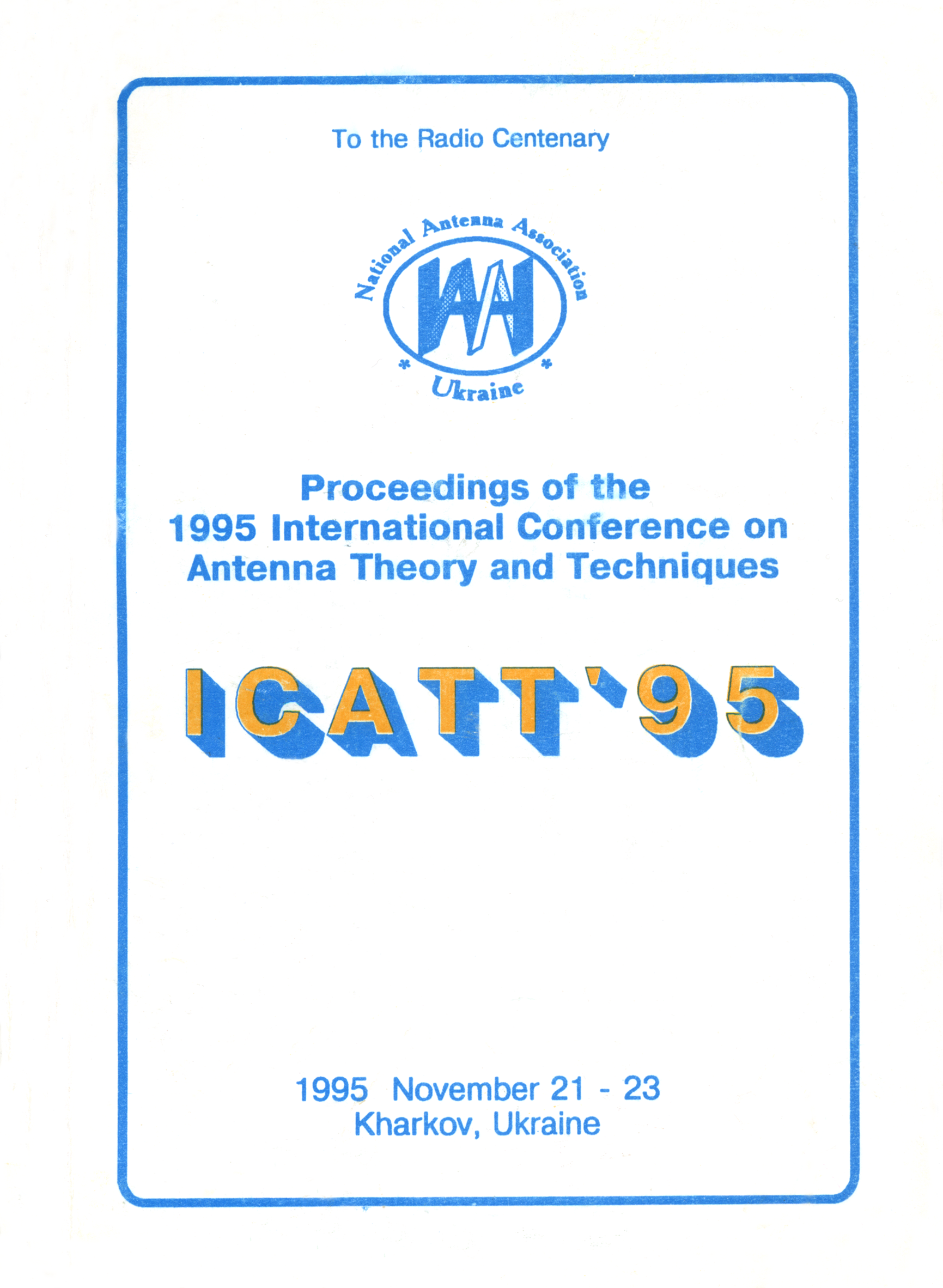Small-size "contact" antenna for medical applications
DOI:
https://doi.org/10.1109/ICATT.1995.1234184Abstract
In connection with the development of medical instrument-making industry the necessity appears to create radiators that operate under the direct contact of radiating surface with the biological tissue, i.e. applicators. Such radiators are to have a good matching in the frequency band, small dimensions, simple design, symmetrical (with respect to the aperture) distribution of the field intensity.
An applicator that has a form of a dipole-slot radiator with a cylindrical metal case has been proposed by the authors. At one end of the cylinder a standard connector is placed. A slot radiator made on the side of a dielectric plate (it is the bottom of the cylinder) is placed on the other end. The latter one is excited by a coaxial cable. On the other side of dielectric plate a passive strip radiator is placed. Its shape, dimensions and location are determined by a number factors, namely: by the aperture dimensions, thickness of the dielectric plate and its εr the frequency band, biological tissue parameters. The advantages of the applicator are the following ones: simplicity of the design, absence of matching elements, manufacturability, and as a result, low price and good electrical characteristics. Experimental research of the frequency dependence of SWR of the applicator (the case diameter was equal to 0.1 of the wavelength in the decimeter band in case of contact with different sections of a human body such as shin, peritoneum, chest, throat) showed that within the frequency band of about 30% SWR of the applicator does not exceed 1.4. The dependence of the matching quality and the frequency band on the biological tissue properties is insignificant. In case when matching is needed in a narrower frequency band (1…5%), for example, in meter band, the diameter of the applicator case may be decreased to 0.075 of the wave length. The measurements of the field intensity showed that the main part of the power is concentrated within the cylinder of the radius that is approximately equal to aperture radius. In this case the depth of the field penetration (or detection), if one determines it by -20 dB level, is not less then 60 mm at 900 MHz.
The developed small-size applicators can be used in the systems of hyperthermia and as sensors in radiothermographs.

